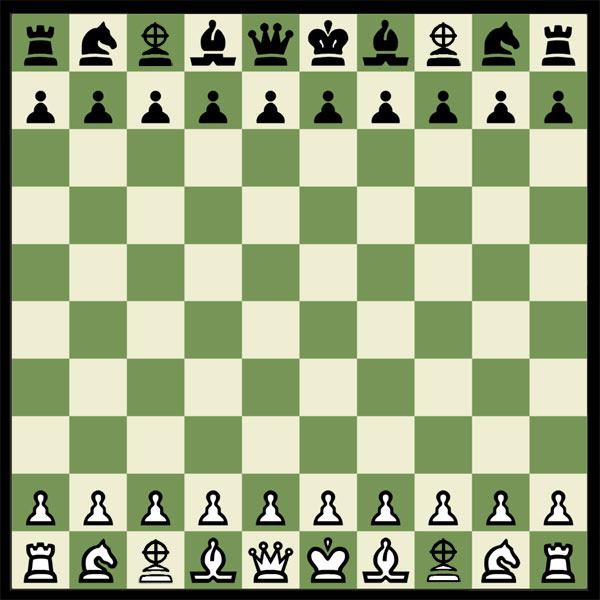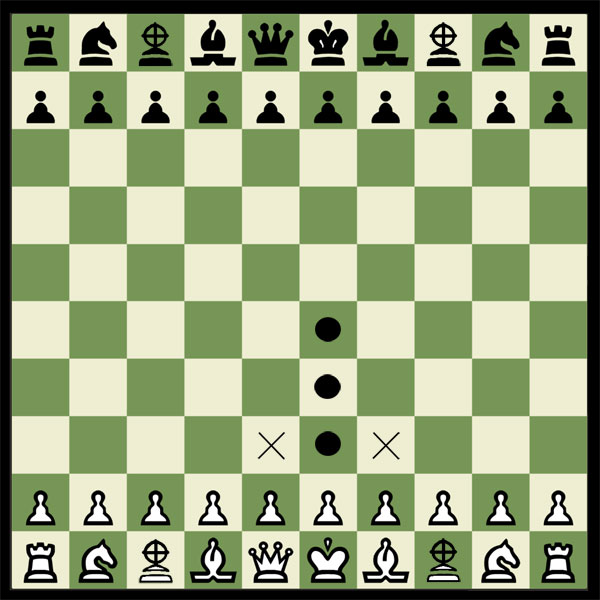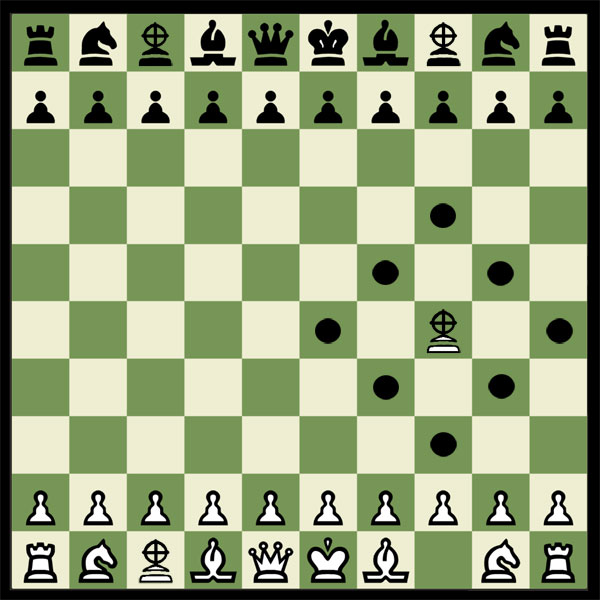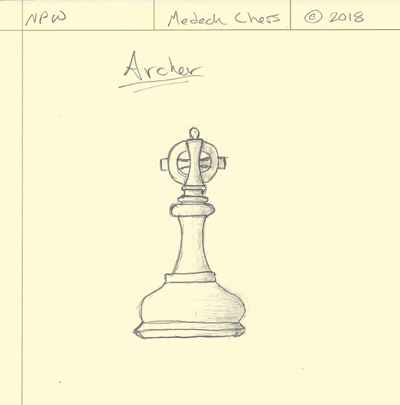Medeek Chess

Introduction
Medeek Chess is a chess variant with a gameboard of 100 squares arranged in a 10x10 grid. Game play is very similar to classical chess however there are some distinct differences. Medeek Chess introduces a new game piece called an Archer, with a eight position move/attack pattern as shown below. Additionally, each player starts with 10 pawns instead of the usual 8 pawns. The most significant difference is the larger game board which increases the possible opening variations and lends itself to more complex gameplay and strategy.
Rules
Setup
Medeek Chess is played on a square board of ten rows (called ranks and denoted with numbers 1 to 10) and ten columns (called files and denoted with letters a to j). The colors of the 100 squares alternate and are referred to as light and dark squares. The chessboard is placed with a dark square at the right-hand end of the rank nearest to each player.
By convention, the game pieces are divided into white and black sets, and the players are referred to as White and Black respectively. Each player begins the game with 20 pieces of the specified color, which consist of one king, one queen, two rooks, two bishops, two knights, two archers, and ten pawns. The pieces are set out as shown in the diagram below, with each queen on a square of its own color, the white queen on a light square and the black queen on a dark.

Note that the Archer is positioned between the bishop and the knight, preserving the basic chess board layout except for the addition of the archers and their associated files.
Movement
Movement of the pieces is identical to classical chess with the following exceptions:
- The pawn can advance one, two or three squares on its first move, see diagram below. All other rules for capture, en passant capture and promotion remain the same.
- Castling is similar to classical chess which consists of moving the king two squares along the first rank toward a rook (which is on the player's first rank) and then placing the rook on the last square that the king has just crossed. Since the gameboard is larger the rook travels 3 squares on the nearside castle and 4 squares on the farside castle.

Archer
Medeek Chess introduces a new game piece called the Archer. Similar to the knight it has the ability to leap over other pieces. The archer has a nine position move/attack pattern and like the bishop is permanently restricted to the color of square it began the board on. The attack pattern of the archer forms a diamond shape and allows it to protect the rook even when the pawn in front of the knight is absent, changing the dynamic of the game slightly.

Inspiration
My reasoning behind further complicating and enlarging the game of chess is based on my recent observations of chess being played at the elite level (the most recent example being the 2018 Chess Championship between Magnus Carlsen and Fabiano Caruana). Computer assisted preparation has now become so prevalent that a lot of the excitement and energy in chess has been replaced by rote memorization of openings and even mid-game sequences. This in my mind defeats the purpose of chess, and reduces it to a very boring game, essentially devoid of creativity. Chess should be about daring moves and tactics, with pure intuition and creativity playing a large part in the decision making process. A larger gameboard (100 vs. 64 squares) coupled with two additional pieces per side should further elevate the gameplay and help prevent it from becoming an uninspiring and scripted choreography.
The decision to add two additional rows to the board was made in order to maintain the square aspect ratio of the game while at the same time increasing game real estate by 56%. The additional space to maneuver also lessens the importance of specific openings and puts more emphasis on mid-game strategy and movement.
Development
I am working on a actual physcial prototype for the gameboard and the new archer piece. Any suggestions or ideas on what form the archer piece should take would be greatly appreciated. My intent is to have the new archer game piece integrate well into the classical chess gameboard in both form and function.

If you have any questions or comments about Medeek Chess please feel free to contact me at 1-425-652-4188.
|
|
|
Copyright © 2018-2019 Medeek Design Inc.